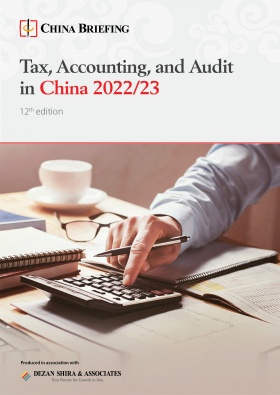Silicon Valley Bank Collapse – Impact on Chinese Companies and Economy
The Silicon Valley Bank collapse late last week sent shockwaves through the technology and finance spheres, raising concerns over wider contagion. Chinese clients of the bank have reported limited exposure, appearing to calm markets. However, the bank’s collapse cuts off an important source of funding for Chinese entrepreneurs and tech start-ups, who will now have fewer options for raising overseas capital.
On Friday, March 10, the California Department of Financial Protection and Innovation (DFPI) announced that it had taken possession of Silicon Valley Bank (SVB), a Californian commercial bank, due to insolvency.
A report from the bank detailing a liquidity crunch released last Wednesday became self-fulfilling, triggering a run on the bank and leading it to become insolvent over a period of just two days.
The collapse of SVB is the largest banking failure since the 2008 financial crash and the second-largest in history. As many Chinese companies were also clients of the bank, its collapse has caused concern in China of a broader financial crisis and negative impact on China’s economy.
Below we look at what caused the bank’s collapse and discuss the possible implications for Chinese companies and the wider economy.
What happened to SVB?
SVB became insolvent last week due to a run on the bank by its depositors, many of whom are technology and innovation start-ups or wealthy individuals in the technology sphere.
This situation has been a long time in the making. During the pandemic, banks experienced a huge influx of deposits as companies and individuals, spurred by government incentives, stimulus checks, and generous financing from venture capital firms (VCs), sought to build cash safety nets in the face of uncertain and economically difficult times.
SVB was one of these banks. According to the DFPI, SVB had assets worth around US$209 billion and total deposits of around US$175.4 billion as of December 31, 2022.
The bank quickly collected more deposits than it was able to lend to borrowers, which led it to turn to fixed-rate US treasury bonds. These types of bonds are generally considered low-risk and stable, however, their value is also directly tied to interest rates – and they take decades to mature.
In 2022, in an attempt to tackle runaway inflation, the US federal reserve began raising interest rates, gradually increasing it from 0.25 percent in March 2022, to 4.75 percent in the latest rate hike in February 2023. This meant the value of the US treasury bonds that SBV had purchased was being eroded.
Additionally, at the end of 2022, depositors had already begun to withdraw their cash as financing from VCs and other firms began to dry up and they required more liquidity. However, as SVB had invested large amounts of its cash in long-term bonds, a large portion of the bank’s funds was no longer accessible, creating a liquidity crunch.
The cash-strapped bank, therefore, decided to sell “substantially all” of its available for sales (AFS) securities, on which it lost US$1.8 billion, according to the mid-quarter strategic action report released on Wednesday, March 8. The report also stated that the company was seeking to raise around US$2.25 billion in common equity and mandatory convertible preferred shares. The company took these actions “because we expect continued higher interest rates, pressured public and private markets, and elevated cash burn levels from our clients as they invest in their businesses”.
The report was widely seen as a sign that the bank was struggling to maintain cash flows and raised alarm among clients of the bank, who began to withdraw their deposits en masse, reportedly at the advice of their VC backers. This sudden spike in withdrawals, in turn, prompted fears that the bank would run out of cash to pay out the deposits, leading to widespread panic and further withdrawals. The panic was spread further and more quickly through social media, such as Twitter, and private messaging groups.
According to findings from the Commissioner of Financial Protection and Innovation, depositors and investors withdrew a total of around US$42 billion the day after the report was released, leaving the bank with a negative cash balance of approximately US$958 million. All of this happened “despite the bank being in sound financial condition prior to March 9, 2023”.
The collapse of SVB has also triggered the closure of Signature Bank in New York.
On Friday, the DFPI announced it had taken possession of the bank and appointed the Federal Deposit Insurance Corporation (FDIC) as the receiver. The FDIC, in turn, set up the Deposit Insurance National Bank of Santa Clara (DINB) to receive all of the insured deposits from SVB. According to an FDIC press release, all insured depositors will be able to access their insured deposits by the morning of Monday, March 13. However, more than 85 percent of the deposits were reportedly uninsured, as the FDIC deposit insurance only covers the first US$250,000 – far below the majority of deposits.
The Biden Administration, seemingly under pressure from the wealthy and influential individuals affected, assured depositors that they will be made whole, and on Sunday, the US Treasury announced that depositors would be able to access all of their funds on Monday morning. This included the uninsured amounts of over US$250,000, and also covered the depositors of the collapsed Signature Bank.
What is the impact on Chinese companies?
Several Chinese technology and biopharma companies were clients of SVB, although all have been at pains to state that they had limited to no exposure to SVB, and that their operations will not be impacted by the bank’s collapse.
The biotechnology company BeiGene, which trades on NASDAQ and the Stock Exchange of Hong Kong (SEHK), stated in a notice to the SEHK that, as of December 31, 2022, around 3.9 percent of its US$4.5 billion of cash and cash equivalents were held in uninsured deposits in the SVB.
Several other Hong Kong-listed biopharma companies also disclosed that they had exposure to the bank, with some even reporting that they had already withdrawn their deposits. These include:
- Jacobio Pharmaceuticals – US$400,000 held in the bank, accounting for about 0.2 percent of the group’s total cash and bank balance, which have already been withdrawn.
- Sirnaomics – US$3.3 million held in the bank, accounting for less than 3 percent of the group’s unaudited total cash and cash equivalents as of December 31, 2022.
- CStone Pharmaceuticals – less than US$600,000 held in the bank, equivalent to less than 0.5 percent of the company’s total cash and cash equivalents.
- Brii Biosciences – as of February 28, 2023, less than 9 percent of the company and its subsidiaries’ cash and bank balances were held by SVB (based upon the company’s disclosed assets between January and June 2022, this would be around RMB 600 million (approx. US$87.6 million).
Both China’s mainland stock markets and the SEHK appear to have recovered on Monday following the initial shock of the bank’s collapse, indicating that investors believe that the bank’s collapse will have a limited impact on Chinese companies.
SBV also has a joint venture with the Shanghai Pudong Development (SPD) Bank – called the SPD Silicon Valley Bank. It remains unclear what will happen to this JV, and a notice posted on the bank’s official WeChat account on Saturday simply stated that “SPD Silicon Valley Bank is committed to serving Chinese science and technology companies, and has always operated steadily in accordance with Chinese laws and regulations.”
What are the longer-term implications for Chinese tech companies and the economy?
Due to the fact that the assets of SVB and other similar banks were not inherently unhealthy, and the crisis was spurred more by panic rather than a serious underlying issue, there is not a very high risk of wider contagion to the global financial system. However, the crisis does expose regulatory shortcomings in the US financial system and raises questions about the impact that social media virality can have on stock markets and investor confidence. At the same time, it may also stop or even reverse the Federal Reserve’s raising of interest rates, which would make lending cheaper for companies in the future.
The collapse of SVB will initially have a direct negative impact on the technology innovation and start-up industry, both in the US and China. SVB was one of the few banks willing to lend to smaller, high-risk technology firms. In addition, it was one of the only banks willing to work with variable–interest entity (VIE) structure companies. This offshore entity structure is used by Chinese companies seeking to raise foreign capital or list overseas, thus circumventing restrictions on overseas fundraising and listing. The disappearance of SVB therefore means there are fewer options for Chinese entrepreneurs to get projects off the ground and fewer fundraising channels for start-ups.
At the same time, the rapid and unexpected collapse of the bank also severely impacts confidence in the financial system and further raises suspicion of the technology industry, which is often seen as financially reckless. Among Chinese companies, it sows unease and may make them less willing to work with US banks in the future.
About Us
China Briefing is written and produced by Dezan Shira & Associates. The practice assists foreign investors into China and has done so since 1992 through offices in Beijing, Tianjin, Dalian, Qingdao, Shanghai, Hangzhou, Ningbo, Suzhou, Guangzhou, Dongguan, Zhongshan, Shenzhen, and Hong Kong. Please contact the firm for assistance in China at china@dezshira.com.
Dezan Shira & Associates has offices in Vietnam, Indonesia, Singapore, United States, Germany, Italy, India, and Russia, in addition to our trade research facilities along the Belt & Road Initiative. We also have partner firms assisting foreign investors in The Philippines, Malaysia, Thailand, Bangladesh.
- Previous Article Belt And Road Weekly Investor Intelligence #124
- Next Article China Releases Reference Texts for Better Protection of Female Employees









